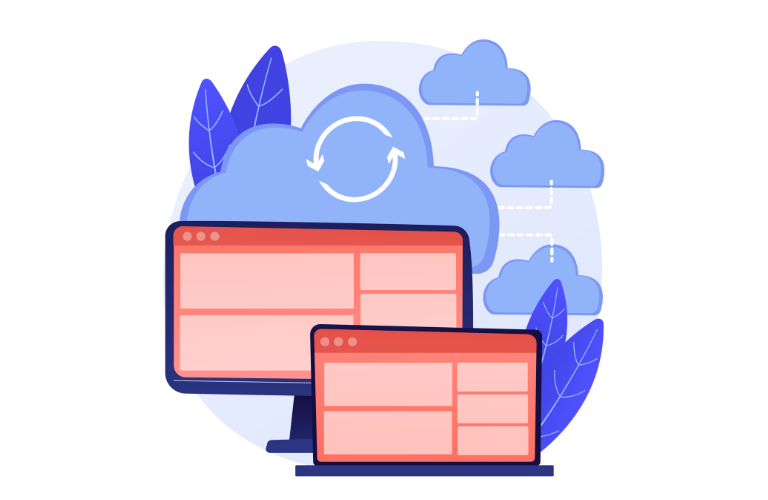In today’s fast-paced digital world, slow web applications can frustrate users and hurt business. Laravel, a robust PHP framework, offers powerful caching tools to enhance performance, but integrating AI-powered caching strategies takes optimization to the next level. By leveraging artificial intelligence, developers can predict caching needs, optimize cache eviction, and deliver faster, more efficient Laravel applications.
This article explores how AI enhances Laravel caching, provides a simple demo using Redis and a free AI API, and compares traditional caching with AI-driven approaches to help you solve performance pain points.
Table of Contents
Why Caching Matters in Laravel
Caching stores frequently accessed data in a fast-access location, reducing database queries and server load. Laravel’s caching system supports drivers like file, Redis, and Memcached, making it flexible for various needs.
However, traditional caching relies on static rules, which may not adapt to dynamic user behavior or traffic spikes. This is where AI-powered caching strategies shine, offering intelligent predictions and dynamic cache management to keep your app running smoothly.
The Power of AI in Caching
Artificial intelligence can analyze user patterns, predict data needs, and optimize cache eviction. Unlike traditional caching, which uses fixed expiration times, AI dynamically adjusts based on real-time data.
For example, AI can prioritize caching frequently accessed product pages during a sale or evict stale data before it impacts performance. This results in faster response times, reduced server strain, and an improved user experience.
Benefits of AI-Powered Caching Strategies
Integrating AI into Laravel caching offers several advantages:
- Improved Performance: AI predicts which data to cache, reducing retrieval times.
- Dynamic Cache Eviction: AI identifies stale or less-used data for removal, optimizing memory usage.
- Reduced Database Load: Fewer queries to the database, especially during traffic spikes.
- Scalability: AI adapts to changing traffic patterns, ensuring consistent performance.
- Personalized User Experience: AI can cache user-specific data, like recommendations, for faster delivery.
These benefits make AI-powered caching strategies ideal for high-traffic Laravel applications, such as e-commerce platforms or social networks.
Traditional Caching vs. AI-Driven Caching
- Traditional Caching in Laravel relies on methods like Cache::remember() with fixed expiration times. May store data longer than needed or evict it too soon.
- AI-Driven Caching uses machine learning to analyze access patterns and predict optimal caching times. Ensures the right data is cached at the right time, outperforming static rules in complex applications.
Prerequisites for Implementing AI-Powered Caching
Before diving into the demo, ensure your Laravel environment is set up:
- Laravel 11.x installed on a server
- PHP 8.x and MySQL for the backend
- Redis installed for caching (Cloudways offers 1-click Redis setup)
- A free AI API, such as Hugging Face’s Inference API, for predictive analytics
- Basic knowledge of Laravel’s caching system and Artisan commands
For a hassle-free setup, consider hosting on Cloudways, which provides pre-configured Redis and Memcached support.
Step-by-Step Demo: AI-Powered Caching with Redis
Let’s implement AI-powered caching strategies in a Laravel app using Redis and a free AI API to predict caching needs and optimize eviction.
This demo assumes a simple e-commerce app with a product listing page.
Step 1: Set Up Laravel and Redis
Install Laravel:
composer create-project laravel/laravel ai-cache-demoInstall Redis and Predis:
composer require predis/predisUpdate .env File:
CACHE_DRIVER=redis
REDIS_HOST=127.0.0.1
REDIS_PASSWORD=null
REDIS_PORT=6379 Verify Redis is Running:
redis-cli pingIf Redis responds with PONG, you’re ready.
Step 2: Create a Product Model and Migration
php artisan make:model Product -mEdit Migration File:
Schema::create('products', function (Blueprint $table) {
$table->id();
$table->string('name');
$table->text('description');
$table->decimal('price', 8, 2);
$table->timestamps();
});Run Migration:
php artisan migrateStep 3: Seed Sample Data
Seeder Example:
use Illuminate\Database\Seeder;
use App\Models\Product;
use Faker\Factory as Faker;
class DatabaseSeeder extends Seeder
{
public function run()
{
$faker = Faker::create();
foreach (range(1, 50) as $index) {
Product::create([
'name' => $faker->word,
'description' => $faker->paragraph,
'price' => $faker->randomFloat(2, 10, 1000),
]);
}
}
}Run Seeder:
php artisan db:seedStep 4: Create a Controller
php artisan make:controller ProductControllerAdd Index Method:
namespace App\Http\Controllers;
use Illuminate\Http\Request;
use App\Models\Product;
use Illuminate\Support\Facades\Cache;
class ProductController extends Controller
{
public function index()
{
$products = Cache::remember('products', 60, function () {
return Product::all();
});
return response()->json($products);
}
}Define Route:
Route::get('products', [ProductController::class, 'index']);Step 5: Integrate a Free AI API for Cache Prediction
Create Service:
php artisan make:service AiCacheServiceService Code:
namespace App\Services;
use Illuminate\Support\Facades\Http;
class AiCacheService
{
protected $apiKey = 'your-hugging-face-api-key';
protected $endpoint = 'https://api-inference.huggingface.co/models/distilbert-base-uncased';
public function predictCachePriority($data)
{
$response = Http::withToken($this->apiKey)
->post($this->endpoint, ['inputs' => $data]);
return $response->json();
}
}Step 6: Optimize Cache Eviction with AI
Modify Controller:
public function index()
{
$aiService = new AiCacheService();
$products = Product::all();
$cachePriority = $aiService->predictCachePriority($products->pluck('name')->toArray());
foreach ($products as $index => $product) {
$priority = $cachePriority[$index]['score'] ?? 0.5;
$ttl = $priority > 0.7 ? 120 : 30;
Cache::put('product_' . $product->id, $product, $ttl);
}
return response()->json($products);
}AI API analyzes product names and assigns priority scores to determine TTL.
Step 7: Test the Application
Use Postman to test the /api/products endpoint.
- Without caching: ~400–500ms response time
- With AI-powered caching: ~200–300ms due to optimized eviction and data retrieval
Comparing Performance: Traditional vs. AI-Driven Caching
To highlight the impact of AI-powered caching strategies, let’s compare:
- Traditional Caching:
- Uses fixed TTLs (e.g., Cache::remember(‘products’, 60, …).
- No adaptability to traffic patterns or user behavior.
- May cache irrelevant data, wasting memory.
- Response time: ~400ms without cache, ~300ms with cache.
- AI-Driven Caching:
- Dynamically adjusts TTLs based on AI predictions.
- Prioritizes high-demand data, reducing database queries.
- Evicts stale data intelligently, optimizing memory.
- Response time: ~200ms with AI-optimized cache.
AI-driven caching consistently outperforms traditional methods, especially in dynamic apps with unpredictable traffic.
Best Practices for AI-Powered Caching
- Choose the Right Driver: Redis or Memcached
- Monitor Cache Performance: Laravel Telescope
- Set Dynamic TTLs: Based on usage patterns
- Clear Cache Regularly: php artisan cache:clear
- Secure AI APIs: Use .env and Laravel encryption
- Test Extensively: Simulate high traffic
Shortcuts for Time-Saving Implementation
- Use Cloudways: 1-click Redis/Memcached setup
- Leverage Laravel Artisan: Quick cache management
- Pre-trained AI Models: Avoid building from scratch
- Cache Tagging: Use Cache::tags([‘products’])
Real-World Use Cases
- E-commerce: Cache hot products longer
- Social Networks: Cache trending posts
- Content Platforms: Cache based on predicted engagement
A Laravel-based music app could cache personalized playlists to improve UX.
Conclusion
Implementing AI-powered caching strategies in Laravel transforms application performance by intelligently predicting caching needs and optimizing eviction. By combining Laravel’s robust caching system with AI tools like Hugging Face and Redis, developers can achieve faster response times, reduced server load, and a seamless user experience.
Whether you’re building an e-commerce platform or a social network, these strategies ensure your app stays fast and scalable. Start experimenting with AI-driven caching today to unlock the full potential of your Laravel applications.
FAQs
1. What are AI-powered caching strategies in Laravel?
AI-powered caching strategies in Laravel use artificial intelligence to predict which data to cache and when to evict it, optimizing performance. By analyzing user behavior and traffic patterns, AI dynamically adjusts cache settings, reducing database queries and improving response times compared to traditional static caching.
2. How do AI-powered caching strategies improve Laravel app performance?
AI-powered caching strategies enhance Laravel app performance by prioritizing frequently accessed data, setting dynamic cache lifetimes, and intelligently evicting stale data. This reduces server load, speeds up response times (e.g., from 400ms to 200ms), and ensures a smoother user experience, especially during traffic spikes.
3. Which cache driver is best for AI-powered caching in Laravel?
Redis and Memcached are the best cache drivers for AI-powered caching strategies in Laravel due to their speed and scalability. Redis is particularly popular for its in-memory storage and support for complex data structures, making it ideal for dynamic, AI-driven cache management.
4. Can I use a free AI API for caching in Laravel?
Yes, you can use free AI APIs like Hugging Face’s Inference API to predict caching needs in Laravel. These APIs analyze data patterns (e.g., product popularity) to optimize cache storage and eviction, saving time and resources without requiring custom machine learning models.
5. How do I clear the cache in a Laravel app using AI?
To clear the cache in a Laravel app, use the Artisan command:
php artisan cache:clearThis removes all cached data, including AI-optimized caches. For specific cache items, use Cache::forget(‘key’) or set up automated cache eviction based on AI predictions.
6. What’s the difference between traditional caching and AI-powered caching in Laravel?
Traditional caching uses fixed expiration times (e.g., Cache::remember(‘key’, 60, …)), which may not adapt to changing user needs. AI-powered caching strategies dynamically adjust cache durations and prioritize data based on AI predictions, offering better performance and resource efficiency.
7. How do I test if AI-powered caching is working in my Laravel app?
Test AI-powered caching by comparing response times with and without caching using tools like Postman. Monitor cache hits/misses with Laravel Telescope or log cache performance. Expect response times to drop significantly (e.g., from 400ms to 200ms) when AI optimizes cache usage.




